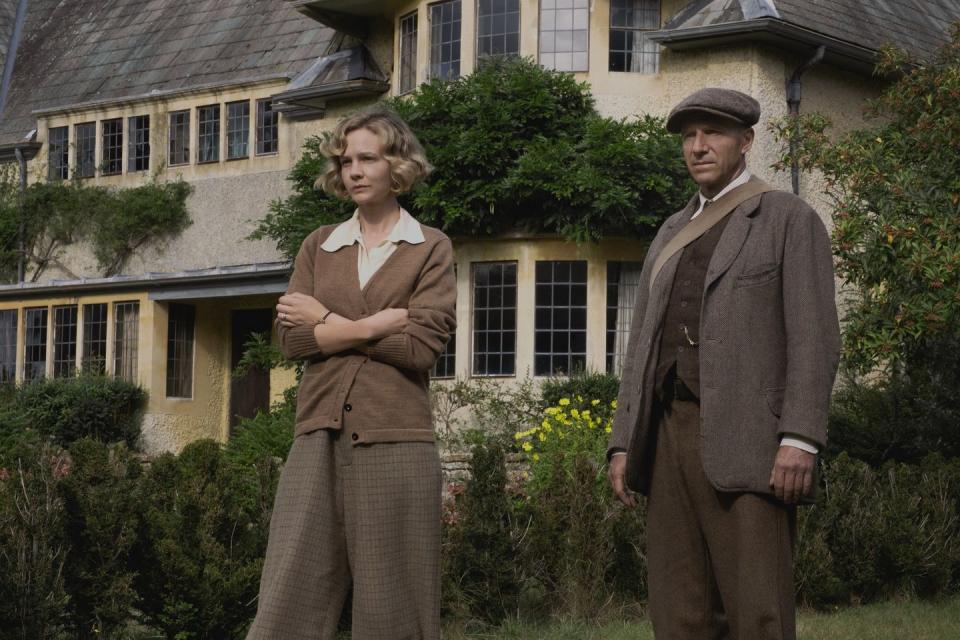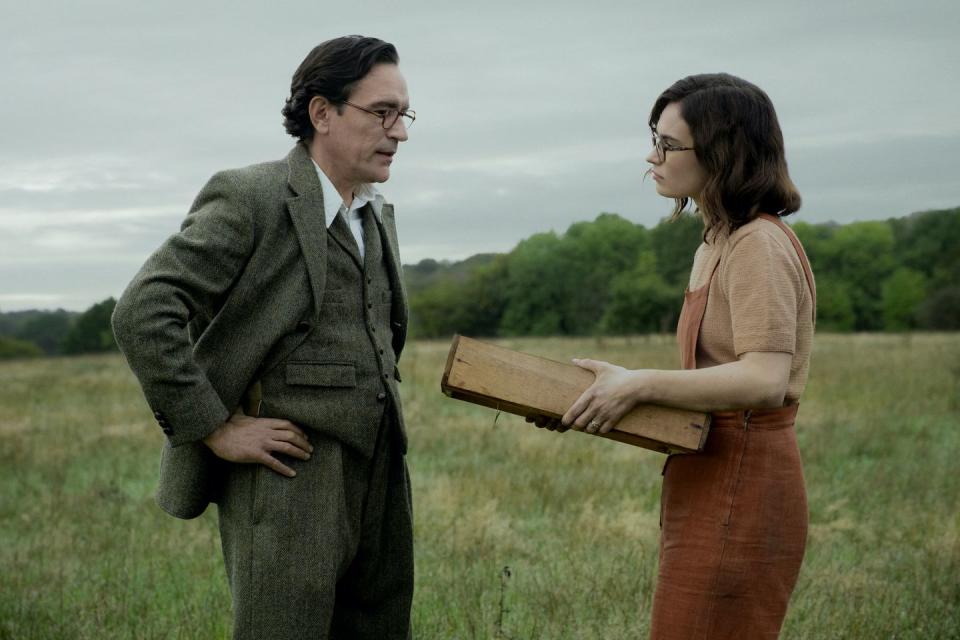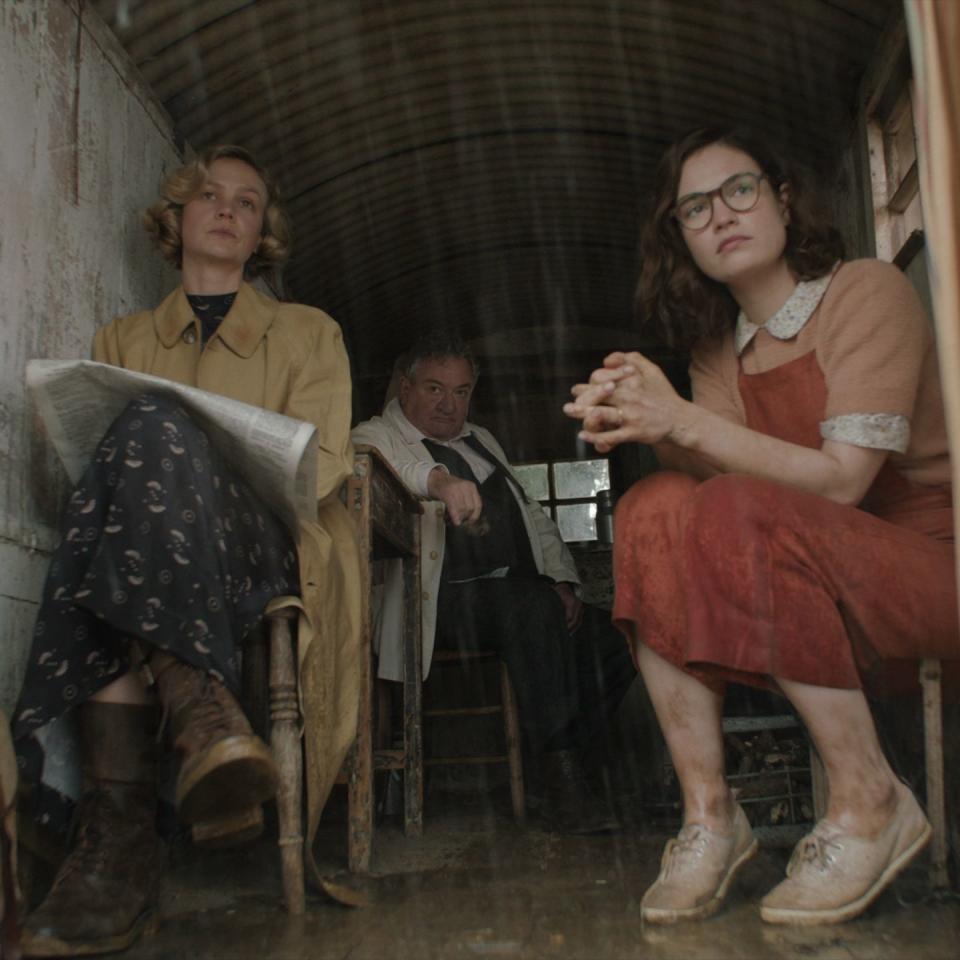The true story of Netflix's The Dig has steeped the movie in controversy

The Dig is one of Netflix's most-watched films and it's easy to see why. Handsomely filmed and with an A-list cast, The Dig is based on the novel of the same name, which fictionalises the true story and lesser-known elements of the excavation of the famous Saxon burial ship at Sutton Hoo.
Much was made of the lengths star Ralph Fiennes went to nail the Suffolk accent of protagonist Basil Brown, a man omitted from history's annals until now. It is wonderful to see those erased from history finally get their time in the sun, especially from such a heartwarming story as that of Sutton Hoo.
However.
The Dig has, perhaps inadvertently, shifted other elements of the story that also deserve to be celebrated. In doing so, it has stepped into some controversy.

It's worth reiterating that Netflix didn't make active choices to erase some elements of the Sutton Hoo excavation. It simply didn't change them from the original novel. It could have because, hell, it's Netflix and at this point the streaming service can pretty much do what it wants.
Watch: 'The Dig': Carey Mulligan recalls the freezing conditions on set
The Dig does rightly set Basil Brown up as one of the main figures in the discovery of Sutton Hoo despite being sidelined due to classism amongst the other archaeologists. Bearing the brunt of another -ism was Peggy Piggott, played by Lily James.
Archaeologist Rebecca Wragg Sykes wrote in The Times: "Her character appears as something of a sidekick to her older husband, Stuart... When the Piggotts arrive on-site, apparently newly married, only a nod is given to Peggy's expertise.

"On the whole she is presented as deferential, even bumbling, putting her foot through a hollow feature." In real life, though she was only 27 at the time of the excavation, by 25 she had already directed fieldwork in Hampshire, publishing her results.
Her characterisation in the film is that of a woman who was unsure of herself and her place in the male-dominated field. In reality, though she may not have been firm with the men she worked with, she was certainly not as inexperienced as she was portrayed.
The accusation of sexism is made all the more awkward by the fact that her own nephew wrote the novel. Author John Preston (who also wrote A Very English Scandal) said: "I did make her slightly younger in the book, she was 27 when she did the dig in real life so to suggest that she was a grizzled professional is pushing it a bit... I tried to stick as far as possible in the novel to what had happened.

"But my main responsibility is to tell the story as vividly and engagingly as possible. Plainly the last thing I wanted to do was to in any way diminish the importance of my aunt or portray in an unflattering light but I genuinely think the book or indeed the film does that."
Watch: 'The Dig': Ralph Fiennes shares the secret behind the Suffolk accent
Another, clearer, example of sexism is in the total erasure of amateur photographers Mercie Lack and Barbara Wagstaff. They were two friends who happened to be visiting the area on holiday, and their series of Sutton Hoo photographs make up half of the collection, including very early colour images of the dig.
Their pictures "form some of the most important records of the structure of the ship, fleetingly revealed in the impression of its long-rotted timbers in the earth and in the lines of its surviving rivets" (via The Times).

Instead, they (and photographer archaeologist OGS Crawford) were amalgamated into Rory Lomax, played by Johnny Flynn. Lomax is Edith Pretty's (Carey Mulligan) cousin, an eccentric young man who also serves as a love interest for Peggy.
More might be made of the choice to dress Peggy in floral skirts for the dig when, as the photographs prove, she wore "t-shirt and dungarees or a boiler suit and natty white plimsolls" (via The Times). Illustrating her naivety and 'girliness' in such an obvious way, despite excusing it as "we just came from a holiday" (presumably the Piggotts' honeymoon), was a strange choice given how serious the film is.

While we can understand the impetus to tie everything together by creating a singular fourth character (Rory), intimately connected to two other lead characters (nephew and LOVAH), it's hard not to notice that women seem to be the ones erased to make this dramatic choice work. And in the case of Peggy, to bend to a particular stereotype of what it means to be a young woman in a man's world.
Whether these choices worked or not, as far as storytelling goes, is up to the viewer. But, in its own meta way, it reminds us all that while we're just beginning to unfurl the truth about plenty of well-known, national-identity-forming stories, there's always more to be dug up.
The Dig is now available to watch on Netflix
Digital Spy has launched its first-ever digital magazine with exclusive features, interviews, and videos. Check it out with a 1-month free trial, only on Apple News+.
Interested in Digital Spy's weekly newsletter? Sign up to get it sent straight to your inbox – and don't forget to join our Watch This Facebook Group for daily TV recommendations and discussions with other readers.
You Might Also Like

 Yahoo Movies
Yahoo Movies 
